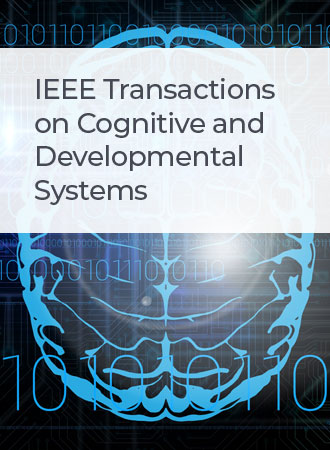利用深度尖峰神经网络进行基于事件的深度预测
IF 4.9
3区 计算机科学
Q1 COMPUTER SCIENCE, ARTIFICIAL INTELLIGENCE
IEEE Transactions on Cognitive and Developmental Systems
Pub Date : 2024-07-10
DOI:10.1109/TCDS.2024.3406168
引用次数: 0
摘要
事件相机由于具有高时间分辨率、低延迟和低功耗等优越特性,在深度估计方面受到了广泛的欢迎。尖峰神经网络(SNN)由于其基于尖峰的事件驱动特性,是一种很有前途的处理事件摄像机输入的方法。然而,随着网络深度的增加,snn的性能会下降,影响其在深度估计任务中的性能。为了解决这个问题,我们提出了一个深峰值U-Net模型。我们的spiking U-Net架构利用精炼的快捷方式和剩余块来避免性能下降并提高任务性能。我们还提出了一种新的针对多步snn的事件表示方法,以有效地利用时间维度上的深度信息。我们在MVSEC数据集上的实验表明,与目前最先进的(SOTA) ANN和SNN模型相比,所提出的方法分别提高了18.50%和25.18%的准确率。此外,与具有相同网络结构的相应人工神经网络相比,我们所提出的SNN模型的能量效率可提高58倍。本文章由计算机程序翻译,如有差异,请以英文原文为准。
Event-Based Depth Prediction With Deep Spiking Neural Network
Event cameras have gained popularity in depth estimation due to their superior features such as high-temporal resolution, low latency, and low-power consumption. Spiking neural network (SNN) is a promising approach for processing event camera inputs due to its spike-based event-driven nature. However, SNNs face performance degradation when the network becomes deeper, affecting their performance in depth estimation tasks. To address this issue, we propose a deep spiking U-Net model. Our spiking U-Net architecture leverages refined shortcuts and residual blocks to avoid performance degradation and boost task performance. We also propose a new event representation method designed for multistep SNNs to effectively utilize depth information in the temporal dimension. Our experiments on MVSEC dataset show that the proposed method improves accuracy by 18.50% and 25.18% compared to current state-of-the-art (SOTA) ANN and SNN models, respectively. Moreover, the energy efficiency can be improved up to 58 times by our proposed SNN model compared with the corresponding ANN with the same network structure.
求助全文
通过发布文献求助,成功后即可免费获取论文全文。
去求助
来源期刊

IEEE Transactions on Cognitive and Developmental Systems
Computer Science-Software
CiteScore
7.20
自引率
10.00%
发文量
170
期刊介绍:
The IEEE Transactions on Cognitive and Developmental Systems (TCDS) focuses on advances in the study of development and cognition in natural (humans, animals) and artificial (robots, agents) systems. It welcomes contributions from multiple related disciplines including cognitive systems, cognitive robotics, developmental and epigenetic robotics, autonomous and evolutionary robotics, social structures, multi-agent and artificial life systems, computational neuroscience, and developmental psychology. Articles on theoretical, computational, application-oriented, and experimental studies as well as reviews in these areas are considered.
 求助内容:
求助内容: 应助结果提醒方式:
应助结果提醒方式:


